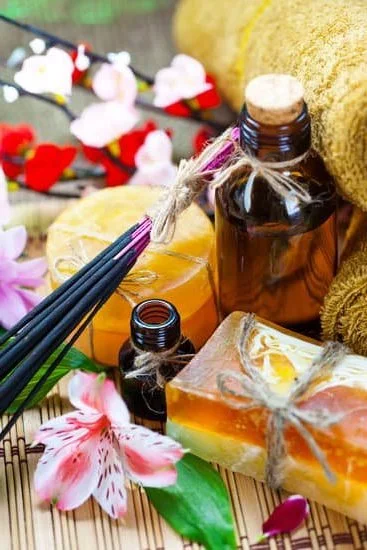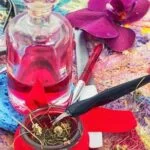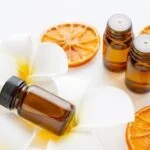Aromatherapy has been used for centuries to promote relaxation, improve mood, and alleviate various ailments. One popular way to enjoy the benefits of aromatherapy is through the use of oil sprays, which can be easily customized to suit individual preferences and needs. In this article, we will explore the world of aromatherapy oil sprays, from understanding different types of essential oils and their therapeutic properties to providing a step-by-step guide on how to make your own custom blend.
Essential oils are the backbone of aromatherapy and are derived from various plants, each with its unique scent and therapeutic properties. It’s important to understand the different types of essential oils available and how they can benefit your overall well-being before creating your custom oil spray blend.
While making aromatherapy oil sprays can be a fun and rewarding experience, it’s crucial to handle essential oils with caution. Safety precautions must be taken into consideration when working with these potent substances. This includes proper dilution techniques and understanding any potential allergic reactions or sensitivities. Understanding these safety measures is vital before moving onto creating your own oil spray blend.
Understanding Aromatherapy Oils
Aromatherapy oils are derived from various plant materials and have been used for centuries for their therapeutic properties. These essential oils are highly concentrated and each type of oil has its own unique benefits and uses. Understanding the different types of essential oils available can help you create a more effective aromatherapy oil spray tailored to your specific needs.
Lavender oil, known for its calming and relaxing effects, is one of the most popular essential oils used in aromatherapy. It can help promote better sleep, reduce stress, and alleviate anxiety. Peppermint oil is another commonly used essential oil, prized for its invigorating and energizing properties. This oil can help improve focus and mental clarity, as well as provide relief from headaches and nausea.
Tea tree oil is well-known for its antibacterial, antiviral, and antifungal properties, making it a great choice for boosting immunity and treating skin conditions like acne or eczema. Eucalyptus oil is often used to relieve respiratory issues such as congestion and coughs due to its decongestant properties. These are just a few examples of the wide range of essential oils available and their respective therapeutic benefits.
When creating your own aromatherapy oil spray blend, it’s important to carefully research the properties of each essential oil you plan to use to ensure that they align with your desired outcomes. Consulting with a certified aromatherapist or healthcare professional can also provide valuable guidance on which essential oils may best address your specific needs.
| Type of Essential Oil | Therapeutic Properties |
|---|---|
| Lavender Oil | Calming, relaxing, stress-relief |
| Peppermint Oil | Invigorating, energizing, headache relief |
| Tea Tree Oil | Antibacterial, antiviral, immune-boosting |
| Eucalyptus Oil | Decongestant respiratory relief |
Safety Precautions
Aromatherapy can be a wonderful way to incorporate the benefits of essential oils into your daily routine. However, it’s important to use these potent substances with caution and awareness. Essential oils are highly concentrated and should be handled with care. Here are some important tips on handling and using essential oils safely:
- Always dilute essential oils before applying them to the skin: Essential oils are extremely potent and can cause irritation or allergic reactions if applied directly to the skin. To avoid this, it’s important to dilute them with a carrier oil, such as coconut oil or almond oil, before use.
- Keep essential oils out of reach of children and pets: Many essential oils can be toxic if ingested, so it’s crucial to store them securely away from curious little hands or paws.
- Perform a patch test before using a new oil: Before applying a new essential oil blend to your skin, perform a patch test by applying a small amount to a discreet area. This will help you determine if you have any sensitivities or allergies to the oil.
- Use caution when diffusing oils in enclosed spaces: While diffusing essential oils can create a pleasant atmosphere, it’s important to use caution when doing so in small or poorly ventilated spaces. Overexposure to certain essential oils can cause respiratory issues for some individuals.
By following these safety precautions, you can enjoy the benefits of aromatherapy while minimizing any potential risks associated with using essential oils. Always remember that when working with concentrated substances like essential oils, it’s better to err on the side of caution.
Equipment and Ingredients
When it comes to creating your own aromatherapy oil spray, having the right equipment and ingredients is essential. Without the proper tools and supplies, you may find it challenging to achieve the desired results. Here’s a comprehensive list of everything you will need to get started on making your very own custom aromatherapy oil spray.
Equipment
To begin with, you’ll need a few basic pieces of equipment to make your aromatherapy oil spray. This includes a clean glass spray bottle with a fine misting nozzle, a small funnel for easy pouring, and measuring spoons or cups for accurate ingredient quantities. It’s important to use glass bottles as essential oils can degrade plastic over time.
Ingredients
The next step is gathering the key ingredients for your aromatherapy oil spray. This will include a carrier oil such as jojoba, sweet almond, or fractionated coconut oil. You’ll also need your choice of essential oils, which will be the primary source of fragrance and therapeutic properties in your blend. Be sure to choose high-quality essential oils from reputable sources for the best results.
Additives
Depending on your preferences, you may also want to consider adding other ingredients such as witch hazel or distilled water to help disperse the essential oils evenly in the spray mixture. These additives can also provide additional benefits such as toning or soothing effects when applied to the skin or surrounding environment.
Now that you have a clear understanding of what equipment and ingredients are necessary for making an aromatherapy oil spray, let’s move on to the next step – creating your custom blend.
Step-by-Step Guide
To make your own aromatherapy oil spray, you will need a few key ingredients and some basic equipment. Here’s a list of what you’ll need to get started:
- Essential oils: Choose your favorite essential oils based on their therapeutic properties and the specific benefits you’re looking for. Some popular options include lavender for relaxation, peppermint for energy and focus, and eucalyptus for respiratory support.
- Carrier oil: You’ll also need a carrier oil such as fractionated coconut oil or sweet almond oil to dilute the essential oils and act as a base for your spray.
- Distilled water: Using distilled water ensures that your spray stays fresh and free from any impurities.
- Glass spray bottle: To store and dispense your aromatherapy oil blend, opt for a dark-colored glass bottle with a fine mist spray top to preserve the quality of the oils.
Now that you have all the necessary ingredients and equipment, it’s time to create your custom aromatherapy oil spray blend. Follow these simple steps:
- Start by adding 10-15 drops of your chosen essential oils to the glass spray bottle. You can use one type of essential oil or mix a few different ones together to create a unique blend.
- Next, fill the bottle about three-quarters of the way full with distilled water. Leave some space at the top to allow room for shaking before each use.
- Add approximately 1-2 tablespoons of carrier oil to the bottle. This will help disperse the essential oils evenly throughout the water and provide nourishment for your skin.
- Securely cap the bottle and shake well to mix everything together thoroughly.
Congratulations. You’ve now created your very own custom aromatherapy oil spray blend. Experiment with different combinations of essential oils and carrier oils to find the perfect blend for your needs.
Remember to label your spray with its ingredients and date of creation, and store it in a cool, dark place away from direct sunlight to ensure maximum potency over time.
Now that you know how to make aromatherapy oil spray, feel free to use it as part of your daily self-care routine – whether it’s spritzing it onto your body after a shower, using it as a room or linen freshener, or incorporating it into meditation or yoga practices for an added sensory experience.
Tips for Customizing
Once you have gathered the necessary equipment and ingredients, it’s time to start making your custom aromatherapy oil spray. The first step is to select the essential oils that will be used in your blend. Consider the therapeutic properties of each oil and how they can address your specific needs.
For example, lavender oil is known for its calming and soothing effects, while peppermint oil is often used for its energizing and invigorating properties. By understanding the benefits of each essential oil, you can create a blend that is tailored to your unique preferences.
After selecting the essential oils for your blend, it’s important to consider their aroma profiles. Some oils have strong, distinct scents, while others are more subtle and sweet. Experiment with different combinations of oils to find a balance that appeals to your senses. You may also want to consider creating different blends for different times of the day or specific purposes. For example, a relaxing blend for bedtime or a refreshing blend for use in the morning.
In addition to considering the therapeutic properties and aroma profiles of the essential oils, it’s also useful to think about how you will be using your aromatherapy oil spray. Will you be using it as a room spray, pillow mist, or body mist? Taking into account how and where you will be using the spray can help guide your customization process and ensure that you create a blend that perfectly suits your needs.
| Essential Oils | Therapeutic Properties |
|---|---|
| Lavender | Calming and Soothing |
| Peppermint | Energizing and Invigorating |
| Bergamot | Uplifting and Relaxing |
Storing and Using Your Aromatherapy Oil Spray
Proper Storage Techniques
When it comes to storing your homemade aromatherapy oil spray, it’s important to keep it in a cool, dark place. This will help preserve the integrity of the essential oils and prevent them from deteriorating due to exposure to light or heat. Consider using tinted glass bottles to further protect your blend from UV rays. Additionally, be sure to label your spray with the date it was made and the ingredients used, so you can easily track its freshness.
Creative Ways to Incorporate Your Spray Into Your Daily Routine
There are countless ways to use your aromatherapy oil spray throughout the day. One popular method is to mist your linens and pillows before bedtime to promote relaxation and restful sleep. You can also use your spray as a natural air freshener in any room of your home, or even as a personal body mist for a refreshing pick-me-up during the day.
Using Aromatherapy Oil Sprays for Emotional Well-Being
In addition to their physical benefits, aromatherapy oil sprays can also have a positive impact on emotional well-being. Consider creating a custom blend designed to uplift your mood or provide comfort during times of stress or anxiety. Simply spritzing the air around you with this personalized scent can serve as a powerful mood-booster and source of calm throughout the day.
By understanding the proper storage techniques and exploring creative ways to incorporate your aromatherapy oil spray into your daily routine, you can fully experience all the therapeutic benefits that essential oils have to offer. Whether you’re looking for relaxation, mental clarity, or an overall sense of well-being, incorporating these custom blends into your life can be truly transformative.
Additional Aromatherapy Resources
In conclusion, making your own aromatherapy oil spray can be a rewarding and beneficial way to incorporate the healing properties of essential oils into your daily life. By understanding the different types of essential oils and their therapeutic properties, as well as following important safety precautions, you can create a custom blend that suits your specific needs.
With the right equipment and ingredients, along with a step-by-step guide, you can easily make your own aromatherapy oil spray at home.
Customizing your oil blend is an exciting opportunity to tailor the spray to your preferences and requirements. Whether you’re looking for relaxation, mental clarity, or an energy boost, there are endless possibilities to explore when creating your own custom blend. Additionally, understanding how to properly store and use your aromatherapy oil spray will ensure that you get the most out of its benefits.
For those interested in delving deeper into the world of aromatherapy and essential oils, there are numerous resources available for further reading and exploration. From books and online articles to workshops and courses, there are many ways to expand your knowledge and expertise in this fascinating field. By taking advantage of these additional resources, you can continue to enhance your understanding of aromatherapy and find new ways to incorporate it into your wellness routine.

Are you looking for a natural way to improve your health and wellbeing?
If so, aromatherapy may be the answer for you.





